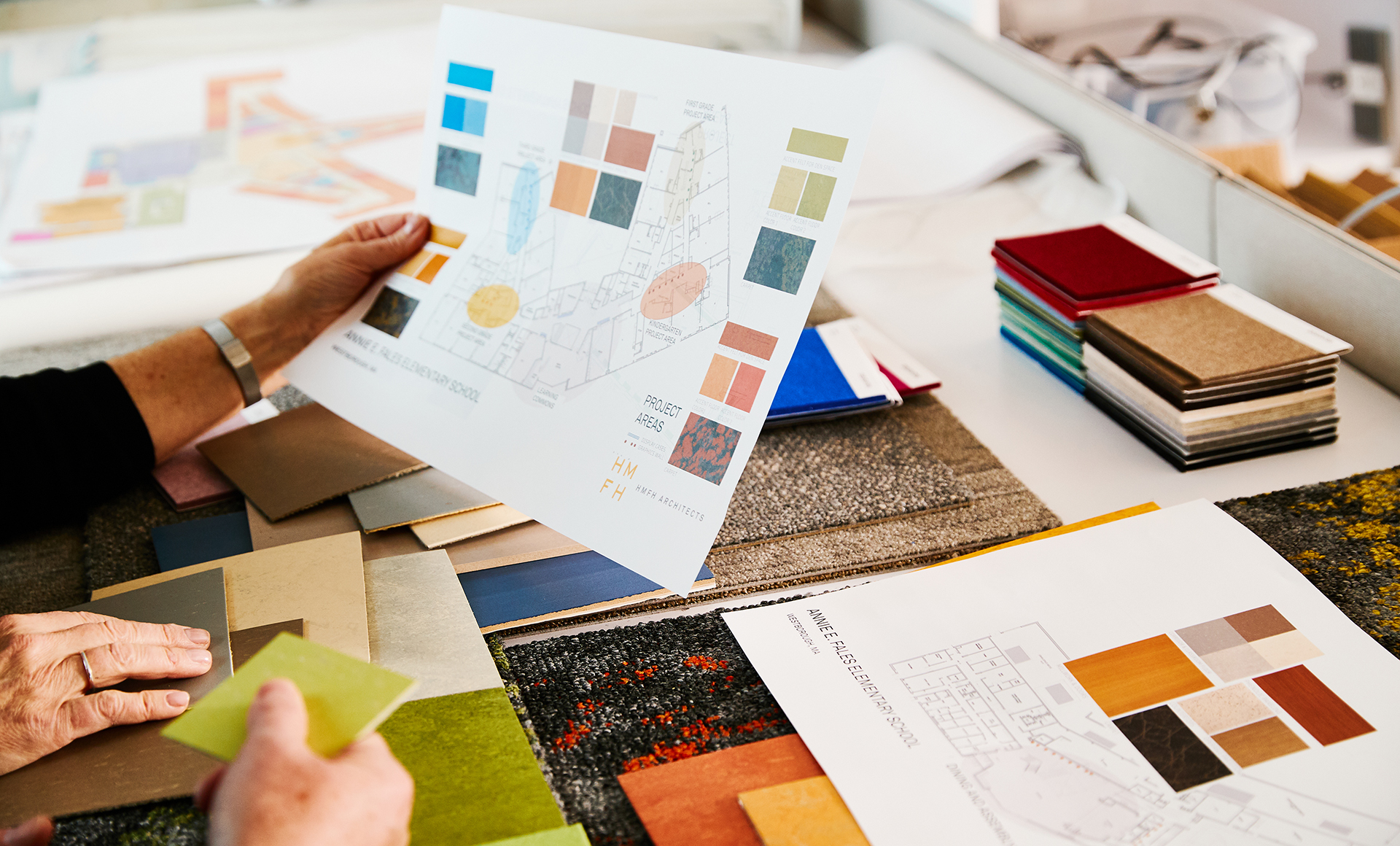HMFH Implements
Healthy Material Initiative at Bristol-Plymouth
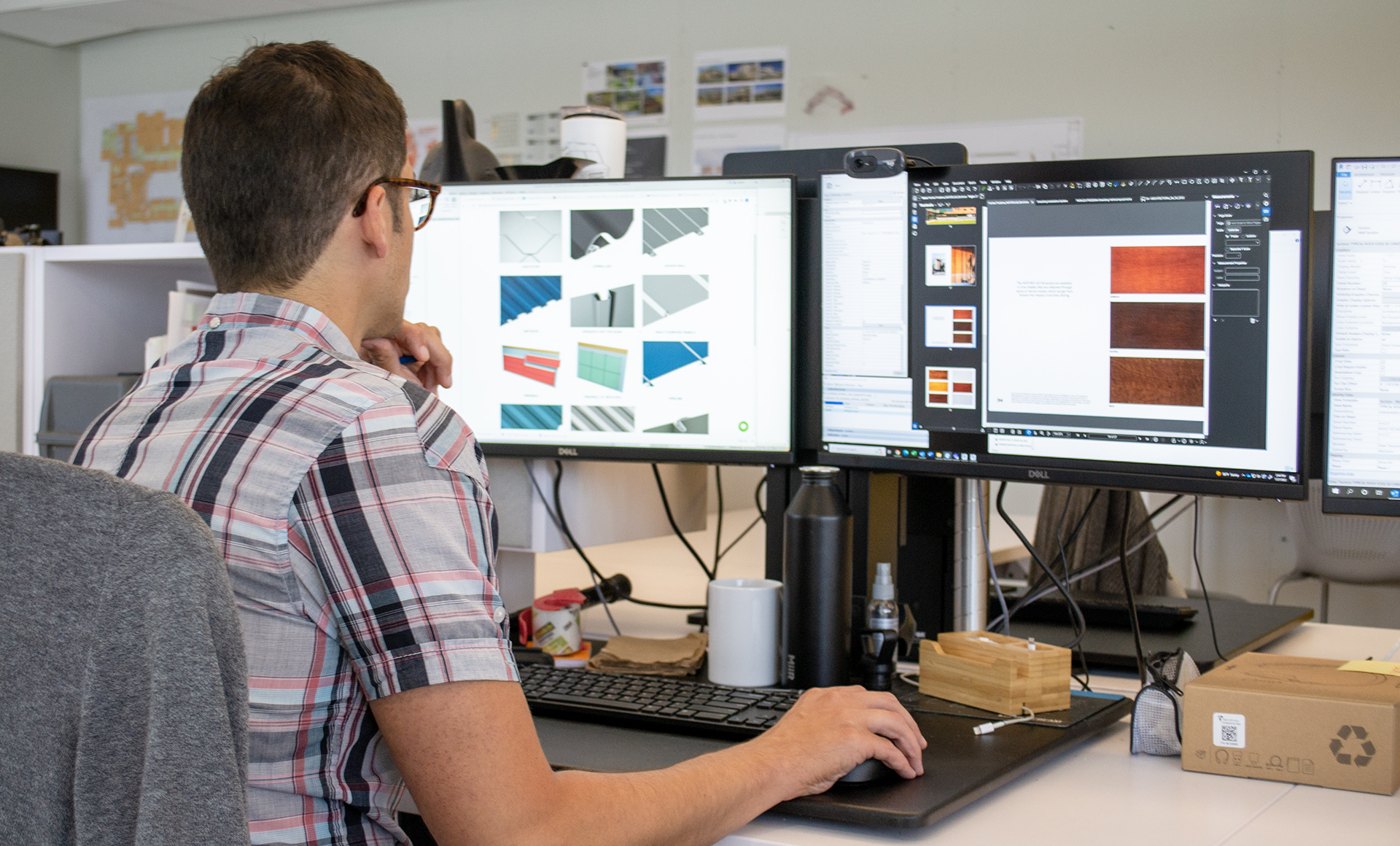
In collaboration with the Massachusetts School Building Authority (MSBA), HMFH is developing a new standard for healthy materials in K-12 public schools. Currently in design, the new Bristol-Plymouth Regional Technical School will serve as the pilot project for this program.
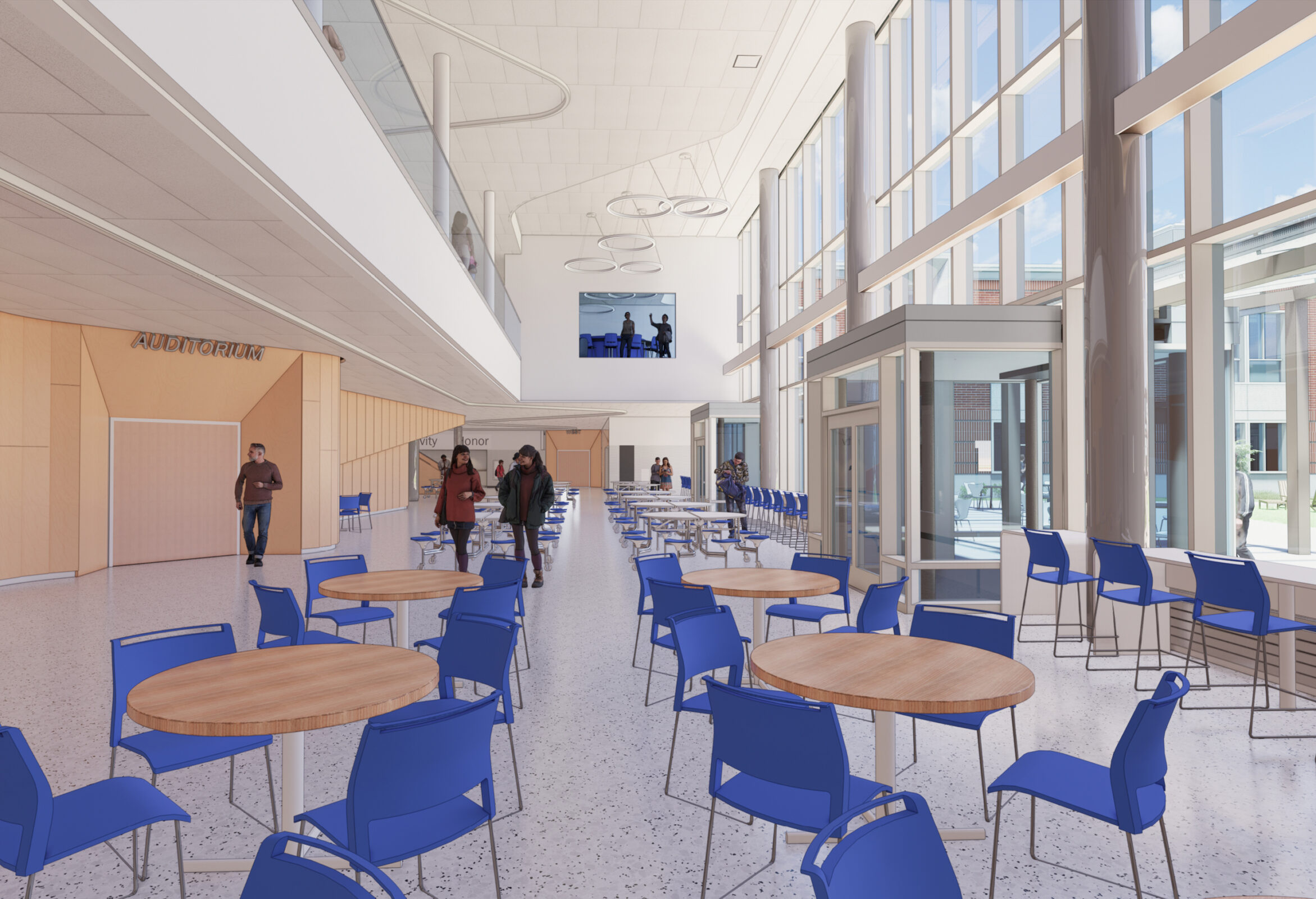
A healthy interior environment is foundational to a child’s education—by the time a student graduates high school, they will have spent more than 15,000 hours in a school, which is the second longest indoor exposure time after their home.¹ Therefore, it is essential that educational facilities provide the healthiest possible environments to support student wellness, growth, and development. A key piece of this is understanding the impact of building materials on health and well-being.
Research by Harvard University shows that chemicals often found in building materials have been linked to health conditions including cancer, immune suppression, diabetes, high cholesterol, obesity, and thyroid diseases.² Currently, product manufacturers are not required to disclose the chemical makeup of their products, making it incredibly difficult to make informed design decisions regarding the safety of building materials. In the same way that nutrition labels for food enable us to make healthy choices about our diet, complete material transparency allows designers and owners to understand the implications of different building materials and select accordingly.
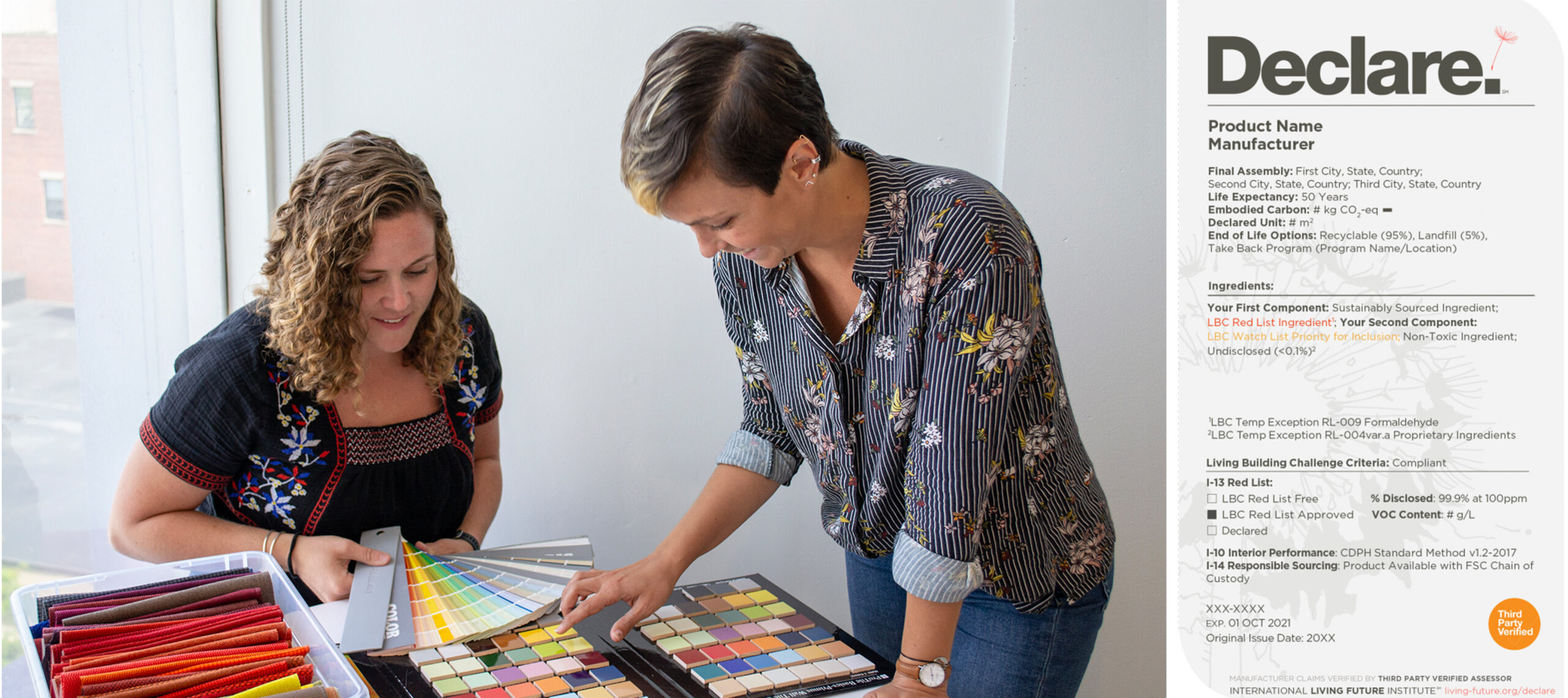
Standards for material transparency do exist, and a primary goal of HMFH’s research for Bristol-Plymouth is to identify and specify materials that are proven to be safe by fully disclosing ingredient and manufacturing information through Declare. Declare is a platform for manufacturers to provide essential information on the material makeup of their products and compliance with standards such as the Living Building Challenge (LBC) Red List and LBC Watch List, which outline materials, chemicals, and elements harmful to human health and the environment.³
A product’s compliance with the LBC Red List is represented on the Declare label by the product’s Declaration Status, of which there are three:
- LBC RED LIST FREE products disclose 100% of ingredients present at or above 100 ppm (0.01%) in the final product and do not contain any Red List chemicals.
- LBC RED LIST APPROVED products disclose a minimum of 99% of ingredients present in the final product and may contain one or more Red List chemicals, but only if covered by an established exception.
- DECLARED products disclose 100% of ingredients present in the final product but contain one or more Red List chemicals that are not covered by an approved exception.⁴
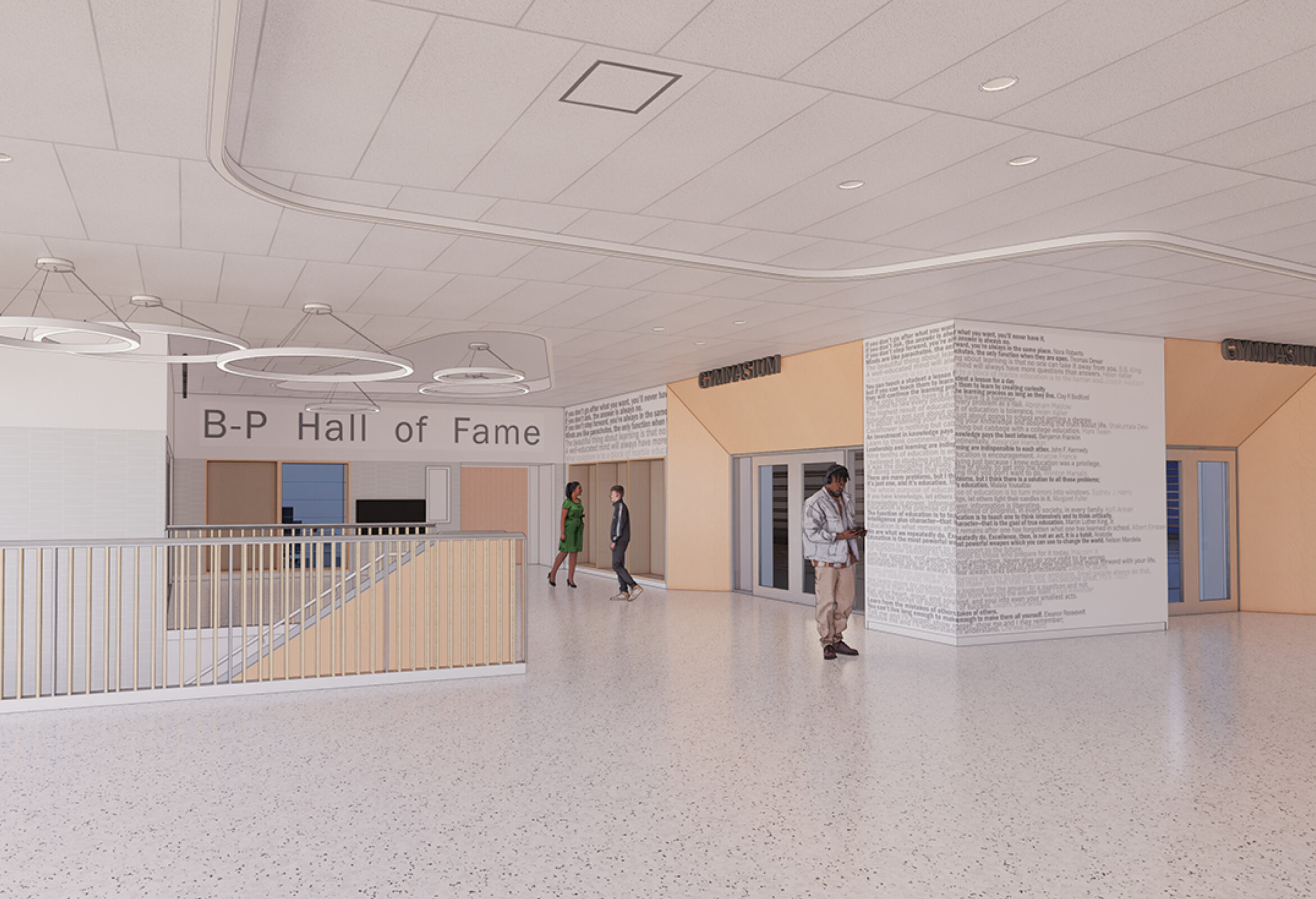
Drawing from over 50 years of experience designing K-12 public schools, HMFH is researching and vetting hundreds of materials to develop a baseline list of products that contribute to a healthy learning environment and are optimized for K-12 architecture. The intent of this research is twofold: first, to provide a list of healthy building materials to serve as a reference point for future projects, and second, to push manufacturers to disclose the chemical makeup of their materials and ultimately eliminate chemicals of concern present in these products.
Focusing on touch surfaces in schools, which encompass materials from furniture to door hardware, the Bristol-Plymouth team began with products commonly used in K-12 architecture to confirm they are not harmful. The research has shown many of these commonly specified products to be healthy, but for those that are not, HMFH’s designers investigated non-toxic equivalent products that meet the same standards for function, durability, and accessibility, which is crucial in public school designs. The materials and manufacturers vetted through this research will be used to develop a comprehensive list of touch surface materials that targets LBC Red List Free products and Declared products where Red List Free is not feasible.
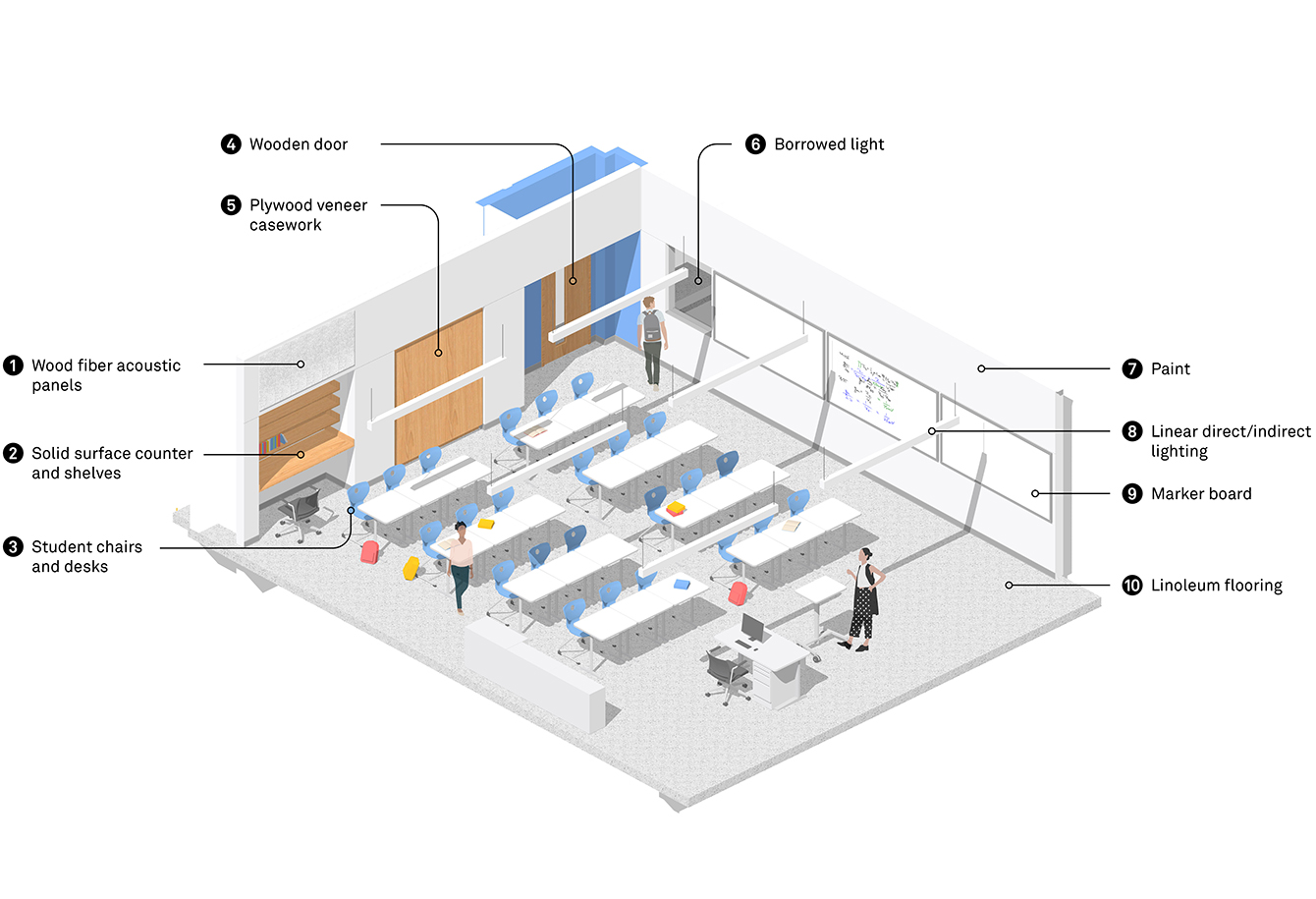
The project’s state-funded budget and public construction laws pose additional challenges to this process. Under these laws, the team is required to provide three equal products for every product specified, which increases the amount of healthy material options that must be provided while budget constraints limit the field of not-toxic products available. Despite these challenges, HMFH’s research will provide a list of healthy products that can easily be implemented in K-12 school designs where the budget allows and can also be used to initiate change among material manufacturers and increase awareness surrounding harmful chemicals in building materials. Some examples of safer substitutes for typical products found in public schools include:
Lockers: High-density plastic lockers can replace painted metal lockers to eliminate their toxic coating
Whiteboards: Glass whiteboards provide a non-toxic alternative to typical painted steel whiteboards, which have a toxic coating
Shades: Fabric window shades are a healthier alternative polyvinyl chloride (PVC)
As the pilot project for healthy material research, Bristol-Plymouth will be a model for healthy schools in Massachusetts. The purpose of this research is to establish initial product standards for MSBA-funded schools, with an ultimate goal of eliminating chemicals of concern from school building materials to ensure that all students across the State have access to healthy interior environments.
Read more about this exciting initiative in a feature from the Boston Globe.
